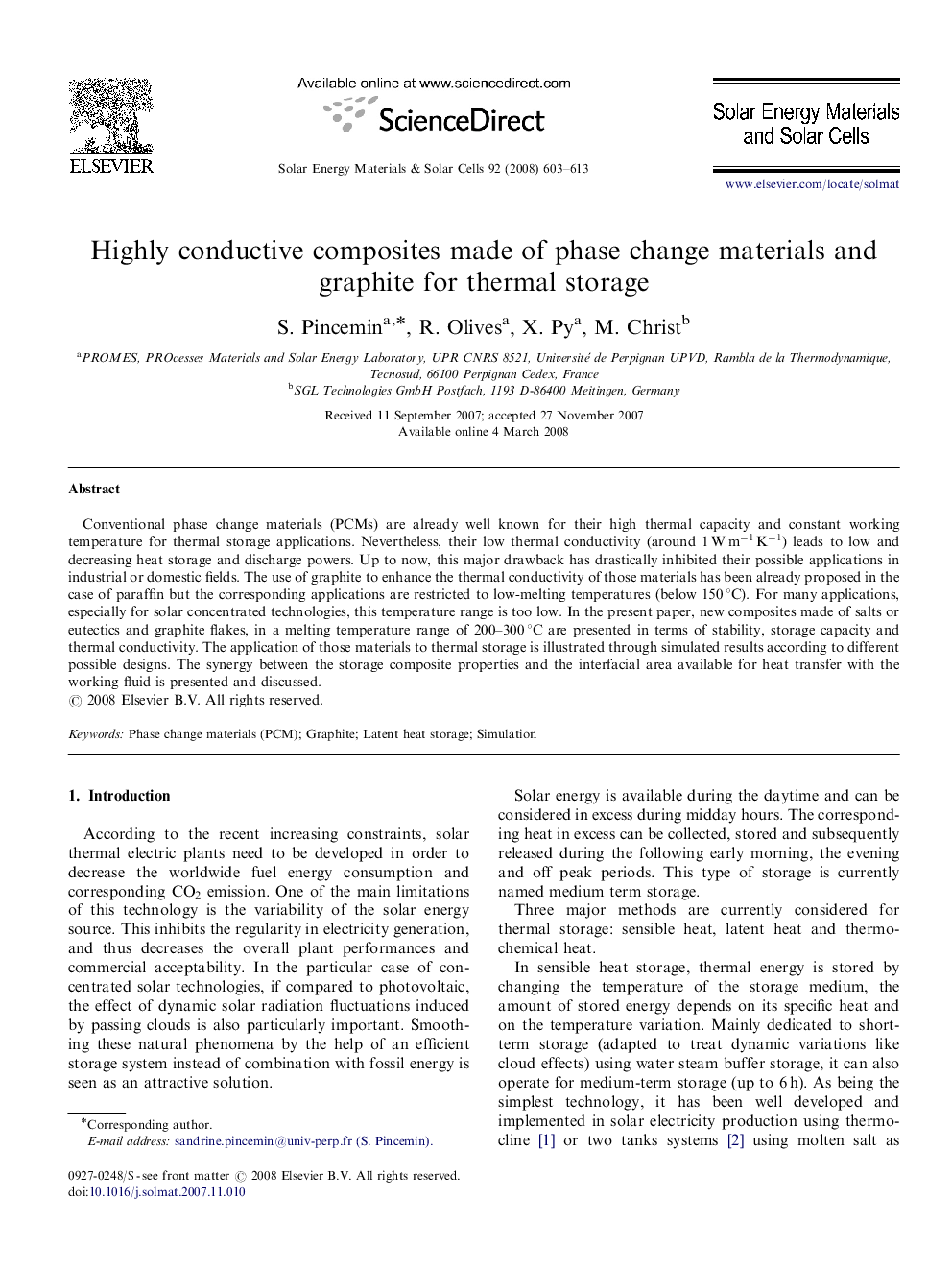| Article ID | Journal | Published Year | Pages | File Type |
|---|---|---|---|---|
| 80764 | Solar Energy Materials and Solar Cells | 2008 | 11 Pages |
Conventional phase change materials (PCMs) are already well known for their high thermal capacity and constant working temperature for thermal storage applications. Nevertheless, their low thermal conductivity (around 1 W m−1 K−1) leads to low and decreasing heat storage and discharge powers. Up to now, this major drawback has drastically inhibited their possible applications in industrial or domestic fields. The use of graphite to enhance the thermal conductivity of those materials has been already proposed in the case of paraffin but the corresponding applications are restricted to low-melting temperatures (below 150 °C). For many applications, especially for solar concentrated technologies, this temperature range is too low. In the present paper, new composites made of salts or eutectics and graphite flakes, in a melting temperature range of 200–300 °C are presented in terms of stability, storage capacity and thermal conductivity. The application of those materials to thermal storage is illustrated through simulated results according to different possible designs. The synergy between the storage composite properties and the interfacial area available for heat transfer with the working fluid is presented and discussed.
